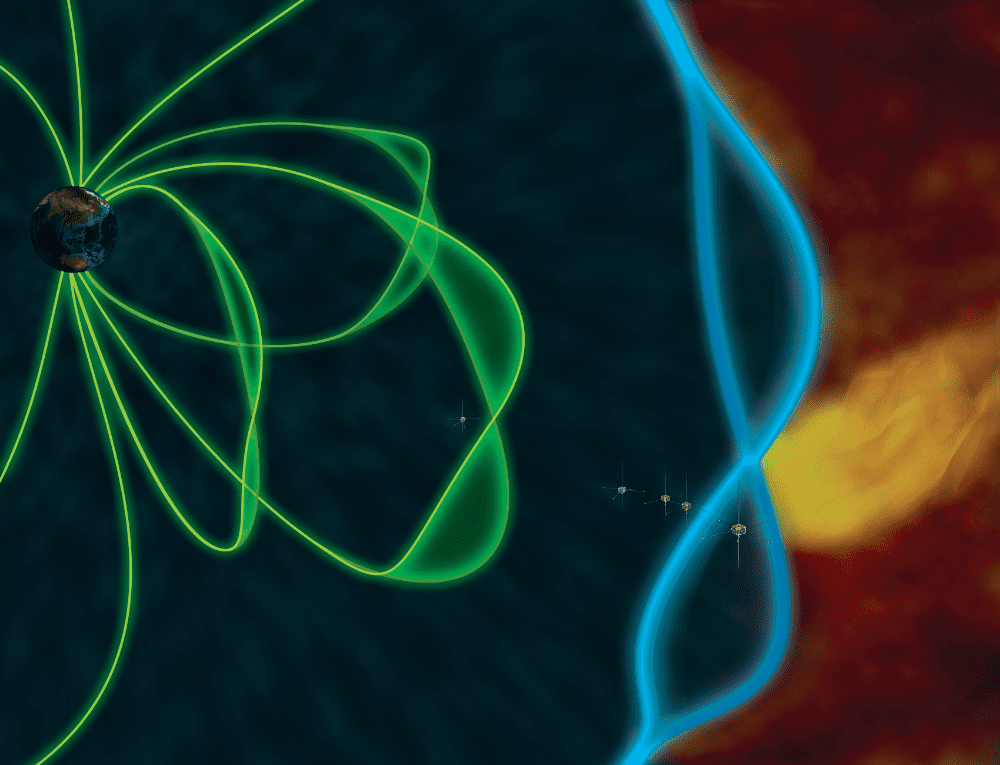A new study found that the Earth’s magnetic shield beats like a drum when it’s hit by external impulses. This confirms a decades-old theory

The Earth’s magnetic field is driven by convection currents in the Earth’s outer core. Differences in temperature, pressure, and composition within the outer core cause some parts of the core to move around. The flow of this liquid iron generates electric currents, which in turn produce magnetic fields. The resulting magnetic fields produce further electric currents, which then generate their own magnetic fields, and so on. This natural self-sustaining loop is called a geodynamo, and produces a magnetic field that loops around the entire planet.
This magnetosphere is essential for life on Earth, as it protects the atmosphere from being eroded by the solar wind and deflects cosmic rays (high-energy charged particles that are mostly from outside the Solar System). However, we’re still learning a lot about the magnetosphere. Obviously, no one has gone down to the inner core to actually see how it is formed, and measurements of its overall structure remain challenging. In a new paper, researchers describe a feature of this field which had been predicted mathematically 40 years ago, but never previously observed.
Essentially, when an impulse strikes the outer boundary of the magnetopause, ripples can travel along its surface. These then get reflected back when they approach the magnetic poles. It’s a bit like how acoustic waves are absorbed and reflected by a drum. When the impulse interacts with the Earth’s magnetosphere, the interference the waves leads to a standing wave pattern in which specific points appear to be standing still while others vibrate back and forth — it’s exactly the way a drum resonates when struck.
Dr. Martin Archer, a space physicist at Queen Mary University of London and lead author of the paper, explains:
“There had been speculation that these drum-like vibrations might not occur at all, given the lack of evidence over the 45 years since they were proposed. Another possibility was that they are just very hard to definitively detect.”
“Earth’s magnetic shield is continuously buffeted with turbulence so we thought that clear evidence for the proposed booming vibrations might require a single sharp hit from an impulse. You would also need lots of satellites in just the right places during this event so that other known sounds or resonances could be ruled out. The event in the paper ticked all those quite strict boxes and at last, we’ve shown the boundary’s natural response,” said Archer.
In order to finally prove this theory, researchers used data from five NASATHEMIS satellites, designed specifically to study the magnetosphere. These five satellites were ideally located when a strong isolated plasma jet slammed into the magnetopause.
The probes were able to detect the boundary’s oscillations and the resulting sounds within the Earth’s magnetic shield, which confirmed the drum model and ruled out any alternative explanations
The Earth isn’t alone in having a magnetosphere. Other planets like Mercury, Jupiter and Saturn, have also been found to have similar magnetic shield — which means that drum-like vibrations may be possible elsewhere. However, further research is needed to understand just how often these vibrations occur and what their significance is.
Movements of the magnetopause can have wide-ranging effects on space weather, potentially damaging technology like power grids, GPS, and even passenger airlines.
Was this helpful?



